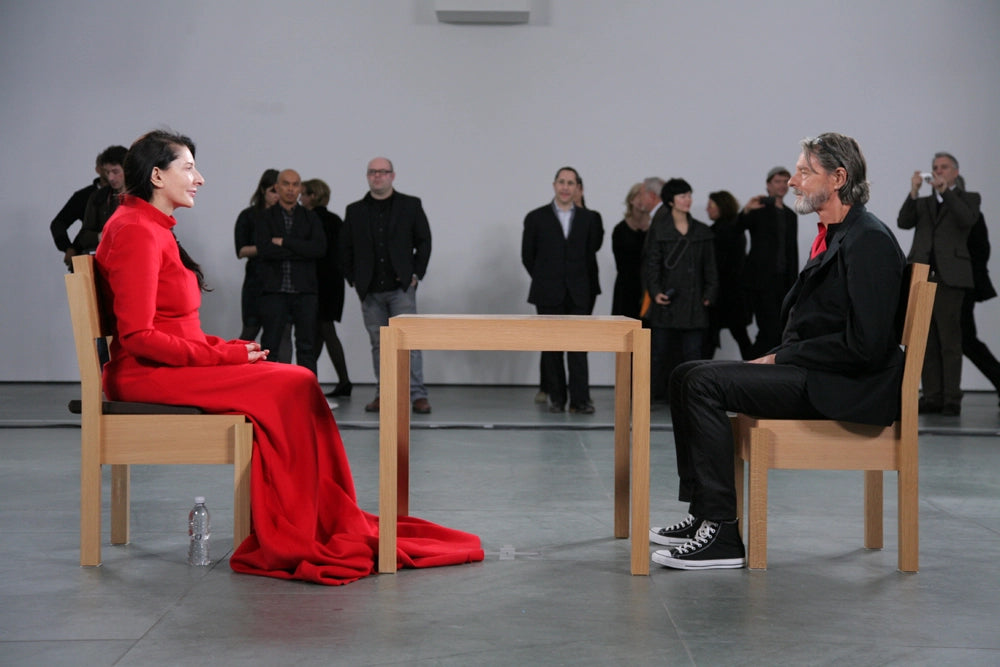
1. Marina Abramović is today's most famous performance artist.
Marina Abramović is the artistSerbia conceptual and performance, philanthropist, writer and filmmaker. Born in 1946, he attended the Academy of Fine Arts in Belgrade, Yugoslavia. Since the beginning of her career, she has pioneered the use of performance as a form of visual art. Her work has explored body art, resistance art and feminist art, the relationship between performer and audience, the limits of the body and the possibilities of the mind. Active for over four decades, Abramović refers to herself as the "grandmother of performance art". In 2007, he founded the Institute Marina Abramović, a non-profit foundation for performance art.

2. The keynote of Abramović's work is the questioning of the artist's corporeality values.
“The Rhythms cycle expresses this well, making it difficult not to call into question the role of the body and its limits, tested and tried in performances. Being, in the first place, the raw material of the artistic work, it is at the same time subject and object, which is why it seems possible to us to speak of self-reflexivity as an essential constitution of performance. Even when it is an intentional “passivity” that is called into question – such as allowing yourself to be manipulated by others or exposing yourself almost entirely – it is a premeditated and previously thought-out letting yourself happen. Opposed to the improvised or random character, made possible by the open structures in the construction of these performances, is their markedly intellectual nature, albeit in a reflection of unpredictable results on the semantics of contingency. Incidentally, if there is one thing that Abramović’s performative practice does not hide, it is the assumption of a clear agenda: there is an unveiling of a critical content evident in the socio-political demarcations that shape his performances.” — A BODY IN PRESENCE. AN APPROACH TO MARINA ABRAMOVIĆ by Tomás N. Castro* (UL/FAD Scholarship Holder, University of Lisbon)

3. Employed the extremes, from pain, danger, exhaustion to spectator participation.
The body has always been her theme and medium. Exploring the physical and mental limits of her being, Mariana Abramovic resisted pain, exhaustion and danger in her quest for emotional and spiritual transformation. Mariana Abramovic's concern was to create works that ritualize simple everyday actions such as lying down, sitting, dreaming and thinking; in effect, the manifestation of a unique state of mind.

4. Marina and Ulay: Loves and companions in Art
Between 1976 and 1988, Marina Abramović collaborated with German photographer and performance artist Ulay to create performances that questioned traditional gender binaries. In addition to acting together, they also had a romantic relationship. This duality ended in 1988, after the separation. When they decided to end the relationship in 1988, To symbolically mark the dissolution of the relationship, they created a play, in which they walked each one from one end of the Great Wall of China, ending up meeting in the middle to say goodbye. Subsequently, Marian Abramovic returned to solo performances independently, staging performances that increasingly demand spectator involvement. At her famous 2010 Museum of Modern Art retrospective, “The Artists This Present,” visitors sat across from Mariana Abramović in silent communion. This performance marked Mariana Abramovic's reunion with Ulay, creating a moment of tension and demonstration of affection.

5. The performance “The Artist Is Present” became Marina Abramovic on a celebrity
In 2010, the Museum of Modern Art (MoMA) in New York held an extensive retrospective of Marian Abramović's work. For the exhibition, the artist debuted the performance piece, in which she sat silently while the museum's spectators sat in front of her. The new performance brought Mariana Abramović more recognition - as did the 2012 HBO documentary The Artist Is Present. After the MoMA retrospective, the artist became something of a celebrity, ending up collaborating with pop icons like Jay Z, Lady Gaga and James Franco.

